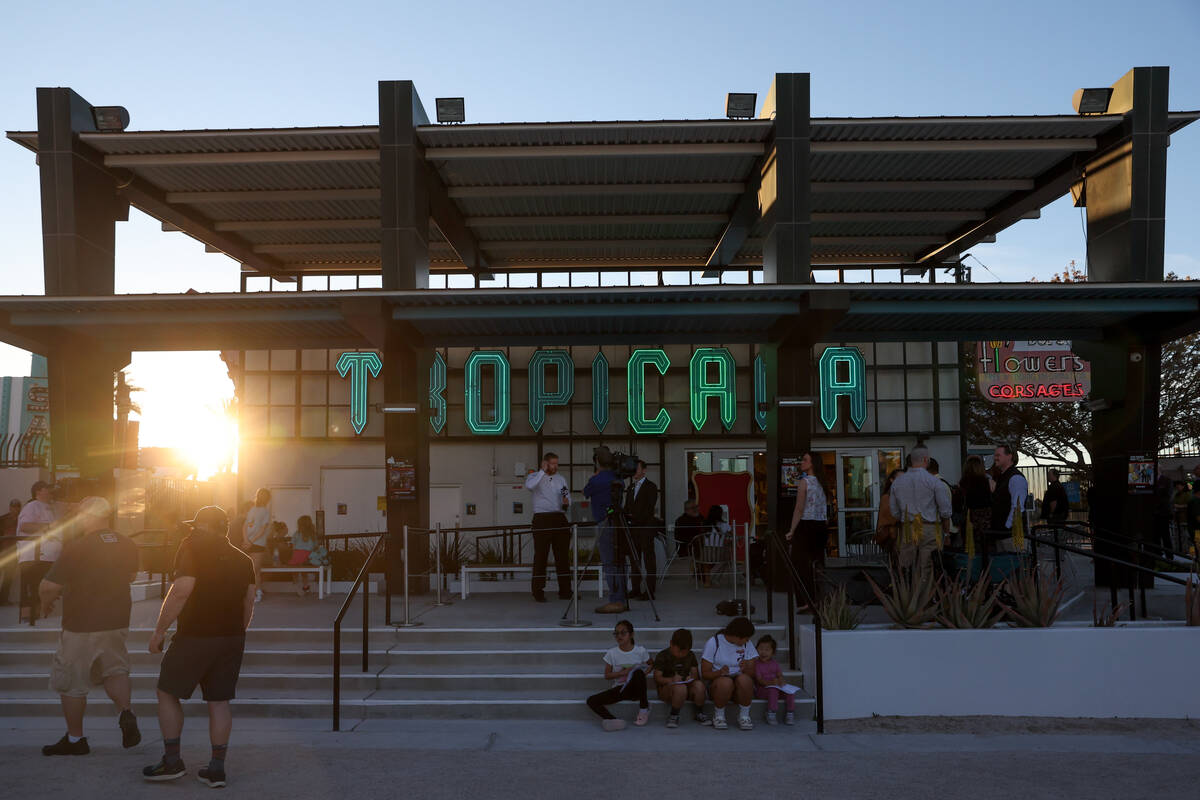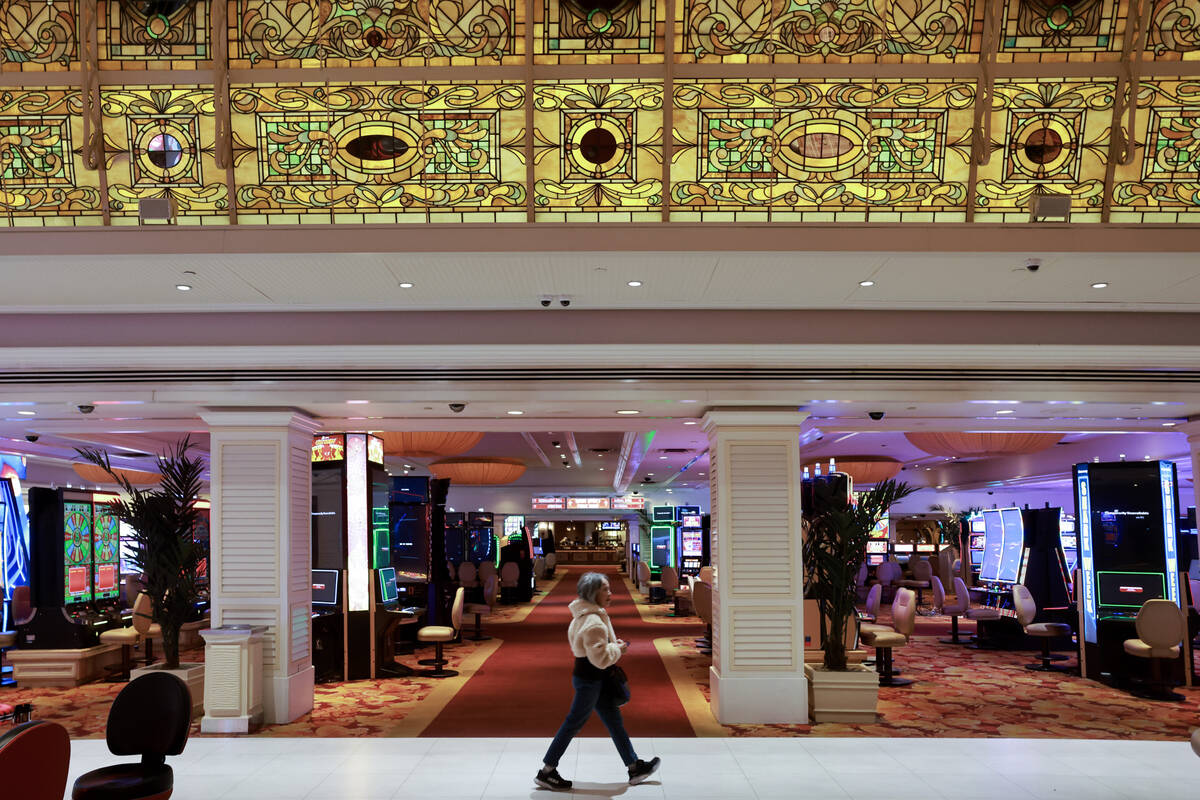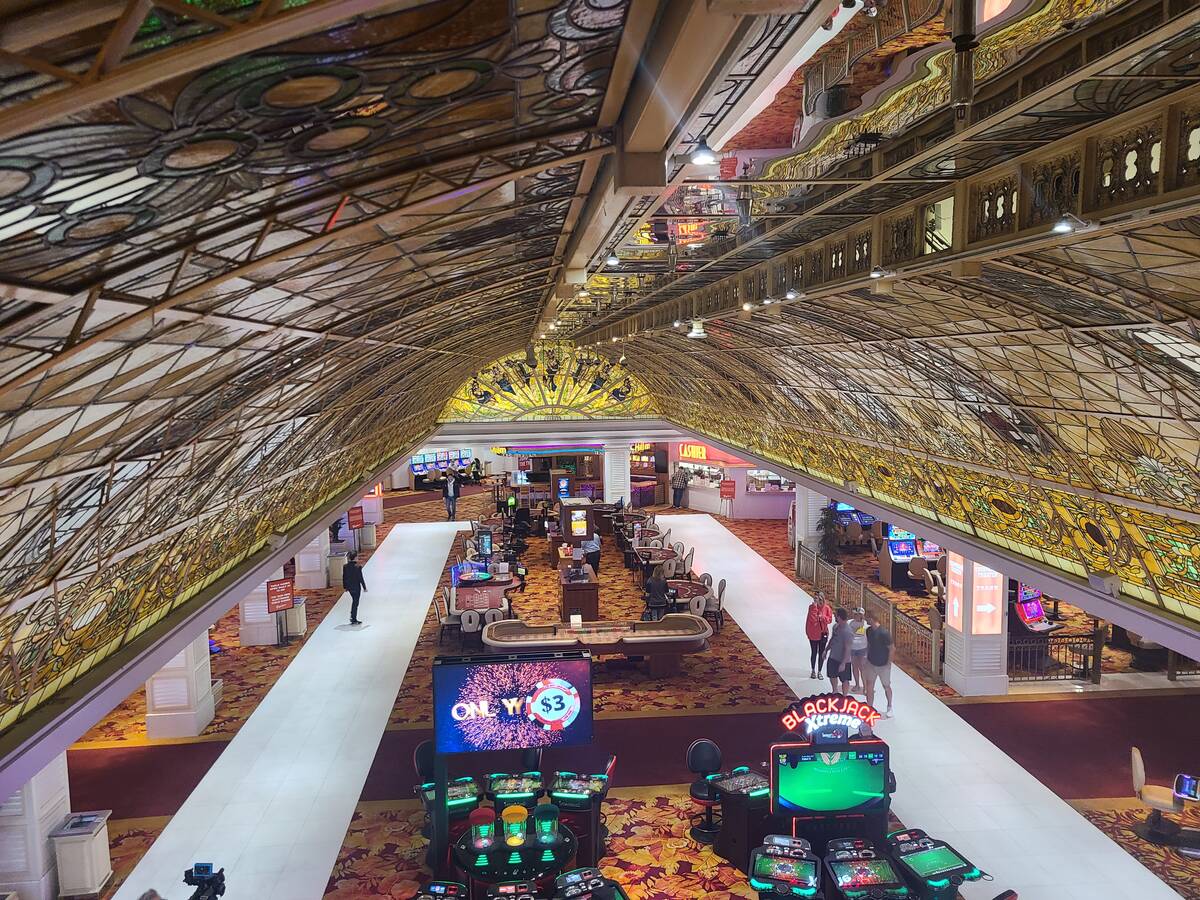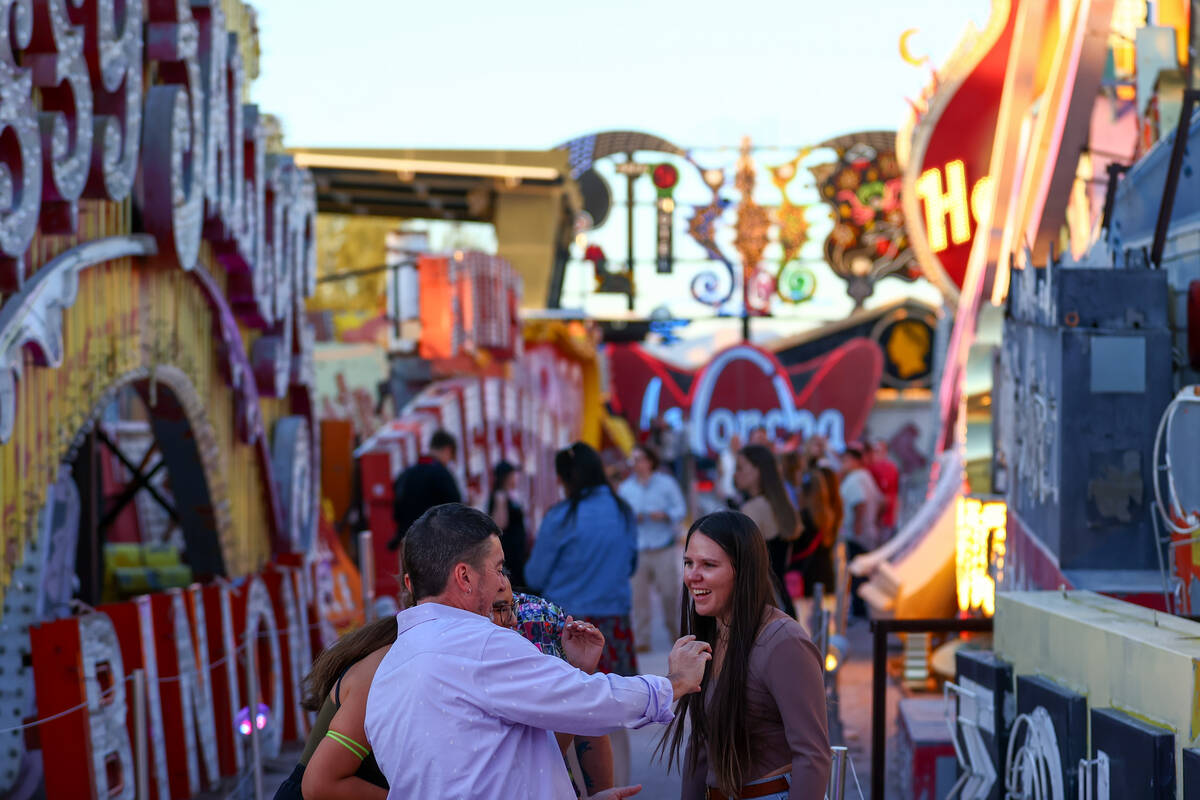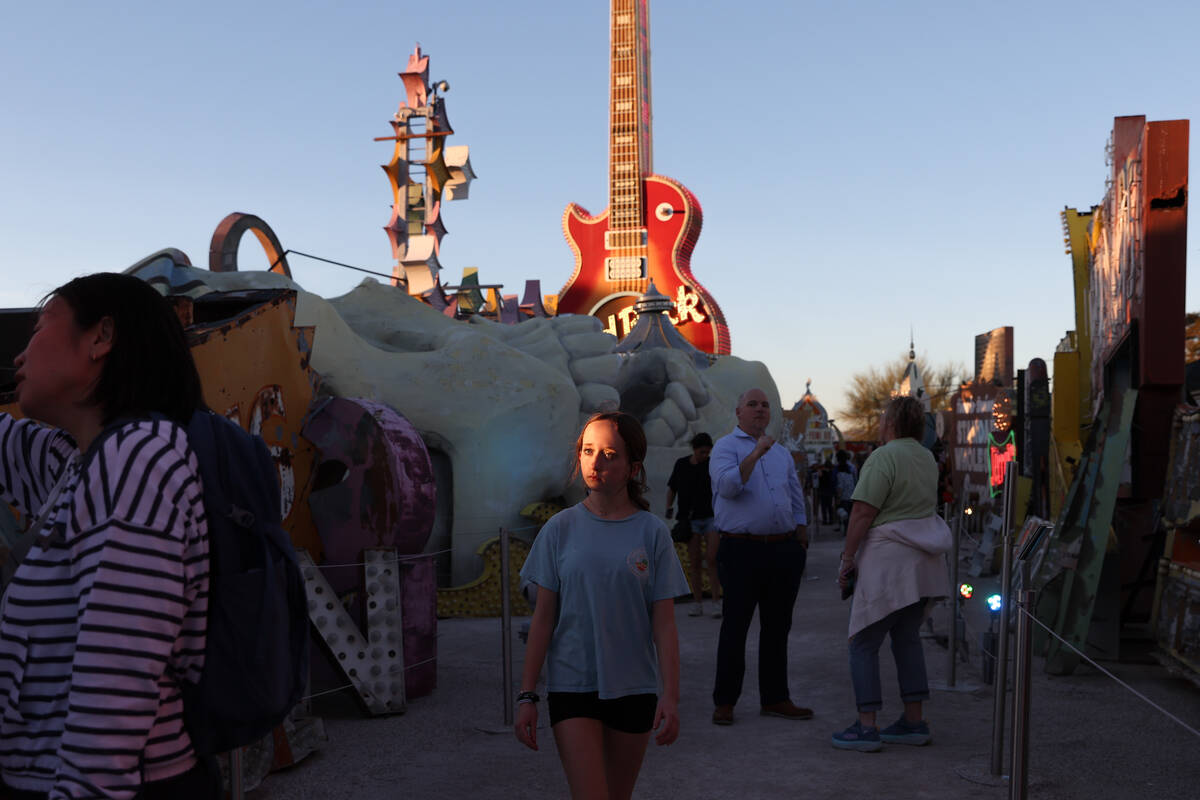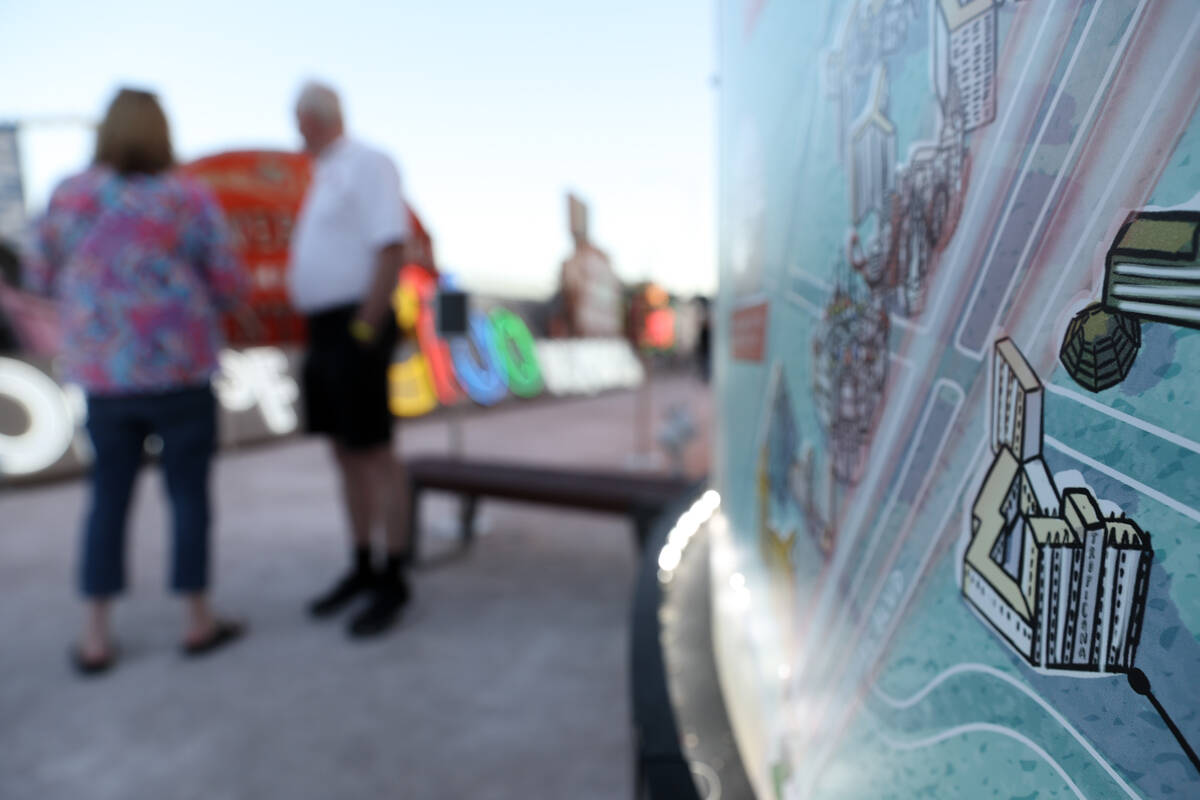Preservation of Tropicana artifacts begins with sign lighting
Representatives of Bally’s Corp. and Las Vegas’ Neon Museum are still assessing how they will rescue a stained-glass atrium canopy that arched over the Tropicana’s main casino for years.
But one other piece of Trop history — a blue neon sign over one of the entrances of the shuttered hotel-casino — was illuminated in a ceremonial flick of a switch Wednesday.
Neon Museum Executive Director Aaron Berger and Tropicana Vice President and General Manager Arik Knowles presided over a brief ceremony before several former Trop employees flipped a giant prop switch to brighten the patio in front of the museum store.
The sign was once mounted on the resort’s porte-cochere. The sign, designed by Jack Dubois and Raul Rodriguez, was acquired by the Neon Museum in 2010 when new owners decided to switch to a South Beach theme with a different color scheme. When the museum learned the Trop’s closure was imminent, they quickly prepared to illuminate the sign.
After restoring some of the neon tubing, the sign was publicly illuminated for the first time Wednesday. About 80 percent of the sign has original materials.
Berger explained that some of the letters — the R, P, I and N of TROPICANA — don’t appear as bright as the rest of the sign. Those are the letters with replacement tubing and that it will take time for them to “burn in” and be like the rest of the letters.
The Tropicana sign, one of 25 now lighted within the Neon Boneyard, is the first of what the museum hopes to be many artifacts displayed from the hotel that opened in 1957.
Tropicana’s stained glass ceiling
Possibly the most intriguing piece is the atrium stained glass ceiling, which was installed in panels in the 1970s. How it will be saved hasn’t been determined.
“We are in the very early stages of reviewing the preservation of that historic piece,” Knowles said. “A lot of engineering needs to happen to figure out what it’s going to take to get that down and maintain its integrity. There are scans happening in the weeks to come to see how we can do that. We’re dedicated to preserve it for the future. What happens to it after that, I’m not sure, it’s a little early.”
Knowles said that right now, workers are in the process of clearing out the 600 slot machines and table games from the casino. He said most of the machines and games have been committed to homes at Bally’s 15 other casino properties nationwide.
Berger said the atrium has its own fascinating history and role in the casino as part of gaming surveillance.
“It’s a super cool piece, and here’s why,” he said. “What’s amazing is that at the base of that incredible atrium, there are these wonderful oval adornments, sort of mirror-like adornments. And those are actually two-way glass. So that’s how security was actually looking down over the tables to ensure everything from card counting to chip swapping and things like that weren’t happening.”
Berger said the museum continues to have good rapport with Bally’s and with the Oakland A’s, the Major League Baseball team that intends to build a $1.5 billion, 33,000-seat stadium on nine acres of the 35-acre Tropicana campus by 2028.
UNLV’s Special Collections and Archives also is participating in the preservation of Tropicana materials.
A team headed by Sara Quigley, director of special collections and archives at UNLV Libraries, is working to take and preserve Tropicana’s corporate records, which include reports, publicity and marketing materials, photographs and entertainment files.
“These discussions are ongoing, so we are still working out the details and finalizing agreements before any materials are donated,” a spokesman for the group said in an email. “We obviously expect final decisions on that soon, but I don’t have a timeline at this time.”
UNLV is not in discussions to preserve the stained-glass ceiling.
Contact Richard N. Velotta at rvelotta@reviewjournal.com or 702-477-3893. Follow @RickVelotta on X.



